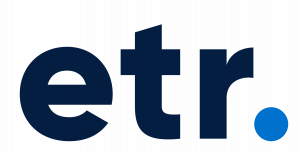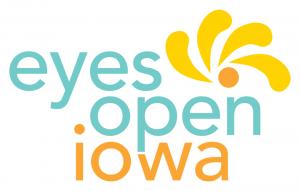How can sex educators ensure that students of all sexualities and genders feel 'seen' and affirmed? This training will cover the basic knowledge instructors need to feel competent leading discussions and answering questions, and will help build skills to create inclusive environments.
Training Hub
The Sex Education Collaborative Training Hub lists trainings for sex educators, facilitators, and other professionals on best practices for sharing important information with clients and the public. From teaching anatomy inclusively to effectively addressing bias in the classroom to addressing racial justice and equity in sex education, the Training Hub includes trainings, technical assistance, and policy support from state, regional, and national leaders in the field of sex education.
Please note: The Training Hub includes both in-person and online professional trainings. If you see a training you are interested in and it isn’t listed as virtual, please reach out directly to any of our members to find out what's possible!
Trainings Offered by State-Based and National Organizations
Displaying results 86 - 90 of 154LGBTQ+ 101
- Indicator 1 (K-12): Explain how availability of supportive school staff, presence of Gay-Straight Alliances (GSAs), LGBQ-inclusive curricular resources, and the presence of comprehensive, enumerated anti-harassment school policies are related to improved school climate for students of all sexual orientations.
- Indicator 2 (K-12): Define sexual orientation and sexual identity, including that everyone has both.
- Indicator 3 (6-12): Explain the difference between sexual orientation, sexual behavior, and sexual identity.
- Indicator 4 (K-12): Demonstrate the use of inclusive and affirming language. (S)
- Indicator 5 (K-12): Demonstrate the ability to intervene effectively in homophobic and other bullying comments and actions. (S)
- Indicator 6 (K-12): Explain three ways that LGBQ+ youth are at disproportionate risk for health disparities.
- Indicator 7 (K-12): Identify three credible, medically accurate, youth-friendly resources that can provide information or support related to sexual orientation.
- Indicator 8 (K-12): Explain why it is essential to include positive portrayals of LGBQ+ people in lessons.
- Indicator 9 (K-12): Demonstrate three strategies that can be used to include positive portrayals of LGBQ+ people in lessons. (S)
- Indicator 1 (K-12): Explain how availability of supportive school staff, presence of Gay-Straight Alliances (GSAs), gender-inclusive curricular resources, and the presence of comprehensive enumerated anti-harassment school policies are related to improved school climate for students of all gender identities.
- Indicator 2 (K-12): Demonstrate the use of inclusive and affirming language. (S)
- Indicator 3 (K-12): Define gender identity and sex assigned at birth.
- Indicator 4 (K-12): Explain how gender identity and gender expression are distinct from each other and from sexual orientation.
- Indicator 5 (K-12): Demonstrate the ability to intervene effectively in transphobic, sexist, misogynistic and other gender-related bullying comments and actions. (S)
- Indicator 6 (K-12): Explain three ways that transgender and gender expansive youth are at disproportionate risk for health disparities.
- Indicator 7 (K-12): Identify three credible, medically accurate, youth-friendly resources that can provide information or support related to transgender and gender expansive people.
- Indicator 8 (K-12): Explain why it is essential to include positive portrayals of transgender and gender expansive people in lessons.
- Indicator 9 (K-12): Demonstrate three strategies that can be used to make lessons affirming for transgender and gender expansive people. (S)
Affirmative Consent
Cultural perspectives, organizational policies, and local and national laws are changing to embrace the principle of Affirmative Consent. A culture of consent is one in which it is the norm, not the exception, for all persons to obtain consent prior to sexual experiences. Many educators feel this policy shift is a step in the right direction and has the potential to create positive change.
Affirmative Consent policies can:
- Build communication skills
- Construct a respectful frame about personal choice
- Help prevent sexual assault
- Address negative, outdated gender roles
Objectives of this training:
- Explain how Affirmative Consent contributes to changing youth norms and attitudes around sexual relationships.
- Deliver a pitch to advocate for the inclusion of Affirmative Consent content in educational settings.
- Develop strategies for addressing youth criticism of Affirmative Consent.
- Describe the key messages, critical talking points, and different activities included in the Teaching Affirmative Consent supplement's lesson plan.
- Describe at least three ways to reinforce Affirmative Consent messaging within related activities and classroom discussions.
- Indicator 2 (K-12): Demonstrate the ability to effectively respond to three different types of challenging questions. (S)
- Indicator 1 (K-12): Describe three health (e.g. physical, social and/or emotional) and/or academic benefits of sex education for young people
At EyesOpenIowa, we specialize in helping educators, schools, and organizations deliver accurate, inclusive, and policy-aligned sexual health education. With decades of experience, our dedicated training and leadership teams work closely with you to develop a customized plan that meets your specific needs. Here's how we can support you:
Curriculum Alignment to Policies and Standards We ensure your curriculum is fully aligned with state and federal policies, as well as the latest educational standards, so your program is compliant and impactful.
Curriculum Development We collaborate with you to create a robust, tailored curriculum that incorporates the latest research and best practices, ensuring it is both effective and engaging.
Curriculum Review for Cultural and LGBTQ Inclusivity Our team assesses your content for cultural relevance and LGBTQ inclusivity, providing recommendations that foster an environment of respect and understanding for all students.
Curriculum Review for Medical Accuracy We verify the medical accuracy of your curriculum, ensuring all health-related content is up-to-date and evidence-based, promoting healthy decision-making.
Scope and Sequence Development and Review We help you develop or refine your scope and sequence to ensure learning objectives are met in a logical, structured manner, maximizing educational impact.
Partner with EyesOpenIowa to elevate your curriculum with customized, expert support, ensuring it is comprehensive, inclusive, and meets the highest standards of educational excellence.
SIECUS’ policy team brings to bear 55 years of research-based expertise on comprehensive sex education to ensure that public policies reflect best practices and current research in support of our nation’s young people. Our agenda is simple: SIECUS advances comprehensive sexuality education as a means of building a foundation for a long-term culture shift that will positively impact all levels of society, particularly issues of gender equity, sexuality, sexual and reproductive health, consent, personal safety, and autonomy. Through technical assistance to states, SIECUS’ staff support states in educating advocates and policymakers about providing rights-based sexuality information and education at the federal, state, and local levels and leading, strengthening, and developing partnerships with other organizations, coalitions, and initiatives to advance policies that promote positive sexual and reproductive health outcomes across the lifespan. Technical assistance is focused on meeting a state’s immediate needs in a timely way.
Virtual PD - Creating Inclusive Classrooms for Students Who Are Transgender and Gender Expansive
Virtual Professional Development is a simulated classroom where teachers can practice teaching student avatars using short scenarios and support from an instructional coach, so they can quickly learn and master the skills they most need to be effective. With upper elementary, middle and high school classrooms, Virtual PD has scenarios for teachers of all grade levels across a wide range of topics aligned with the Professional Learning Standards for Sex Education (PLSSE). You can watch the video here to learn more about Virtual PD.
Using the Virtual Professional Development classroom simulator, the educator will be teaching about pregnancy and reproduction modeling the use of inclusive language for students who are transgender and gender expansive with the student avatars. They will ask the students to think-pair-share myths they’ve heard about how people can become pregnant and have a brief discussion based on their responses modeling using inclusive language related to pregnancy and reproduction. This scenario can be used with our upper elementary, middle or high school avatars.
- Indicator 1 (K-12): Demonstrate three techniques to create an inclusive and affirming learning environment. (S)
- Indicator 2 (K-12): Demonstrate the use of inclusive and affirming language. (S)
Additional Trainings offered by out-of-state organizations
- ‹ previous
- 13 of 49
- next ›
Child Abuse: Recognizing Signs & Intervening
Participants will gain knowledge and develop skills required to recognize signs that a child might be a victim of abuse or neglect. Participants will learn two ways to use mandated reporting as an intervention.
This training is designed for:
- Educators
- Teachers
- Substitute Teachers
- Counselors
- Coaches
- Parents
- Clergy
- Community Workers
- Healthcare Providers
- Healthcare Staff
- Clinicians





